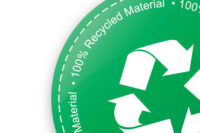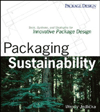Recycling of rigid plastics tops 930 million pounds annually

The recycling of rigid plastics, excluding bottles, climbed 13% in 2011 to reach at least 934 million pounds for the year, and U.S. consumers with local access to recycle all non-bottle rigid plastics shot from 40% to 57% between 2011 and 2012, according to a pair of reports released today at the Plastics Recycling Conference.
Both reports were the result of extensive survey work conducted by Moore Recycling Associates Inc. on behalf of the American Chemistry Council (www.americanchemistry.com).
The “2011 National Postconsumer Non-Bottle Rigid Plastic Recycling Report” found that 61% of rigid plastics collected in the United States were recycled in the U.S. or Canada, a sharp increase from the slightly over one-third recycled in this region in 2007, when Moore Recycling began measuring rigid plastics collection.
This report also found that polypropylene and polyethylene plastics comprise the largest portion (70%) of postconsumer non-bottle rigid plastics collected in the United States with polypropylene constituting 39% of all rigid plastics recycling and high-density polyethylene constituting 31%.
Contributing to the recent surge in rigid plastics recycling has been a substantial increase in the number of communities that are now collecting many types of rigid plastics in addition to bottles. The new consumer access report, “Plastic Recycling Collection: National Reach Study, 2012 Update” found that more than 1,400 cities and 300 counties in the United States now collect all rigid plastic containers in addition to plastic bottles.
Another key finding of this report is that the portion of U.S. consumers with access to recycle two key categories of rigid containers – HDPE rigid cups, tubs and containers and PET trays, clamshells and cups – now tops 60%. This means that for the first time, under the Federal Trade Commission’s guidelines, recycling access is sufficiently widespread to label these containers “recyclable” without the need for additional qualification or disclaimer.
“With recycling of rigid plastics containers now available to a substantial majority of Americans – in other words, surpassing the FTC’s 60% threshold – the recycling message can be greatly simplified, making it easier to educate consumers,” says Steve Russell, vice president of plastics for the American Chemistry Council.
“This is a significant milestone for recycling and a tremendous benefit to packaging manufacturers, major brands, consumers and recyclers,” Russell says.
For example, within the Sustainable Packaging Coalition’s How2Recycle label system, HDPE and PET containers have surpassed the “Limited Recycling/Check Locally” category and now meet criteria for the “Widely Recycled” category.
According to the report, rigid polypropylene containers are the next likely class of rigid plastics to approach FTC’s “recyclability” threshold with 58.4% of U.S. consumers currently able to recycle these items locally.
A third report released today explores major factors that are contributing to the rapid growth in rigid plastics recycling, such as increased demand, public commitments, excess MRF capacity, and improved consumer education. “Growth Trends and New Drivers for Non-Bottle Mixed Rigid Plastics Recycling,” prepared by Resource Recycling, Inc. and sponsored by ACC’s Plastics Division, contains recommendations for communities that are considering adding rigid plastics to their recycling programs, four case studies, and examples of successful community education programs.
Communities currently vary widely in the types of rigid plastics collected for recycling. Most municipalities accept household containers, such as yogurt cups, dairy and deli containers, and lids. A growing number of communities is adding bulkier rigid plastics, such as toys, lawn furniture, laundry baskets, and other items.
The primary domestic end uses for recycled rigid plastics are pipe, buckets, automotive products and other relatively thick-walled injection products, such as drums and crates. Lidded reusable food storage containers and kitchen tools, such as cutting boards, measuring cups and serving utensils, are another growing market for this material.
Data on the recycling of plastic bottles, plastic film, and rigid plastics are captured in plastic recycling industry surveys and reported separately. The collection of plastics in all three categories has increased in recent years, with rigid plastics growing the fastest followed closely by film.
The recycling of plastic film grew four percent in 2011 to top 1 billion pounds for the first time (see full “film report”). The recycling of plastic bottles climbed 45 million pounds in 2011, edging up 1.7%, to reach over 2.6 billion pounds for the year (see full “bottles report”).
Looking for a reprint of this article?
From high-res PDFs to custom plaques, order your copy today!









